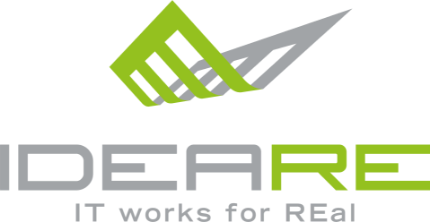Lease management has always been a central activity in the real estate sector, but it is often accompanied by significant operational challenges. The life cycle of a contract, from its definition to signature, is characterised by numerous manual steps that can slow down processes, generating inefficiencies and high costs. Moreover, the massive use of paper for contract documents, notifications and copies has made the traditional system not only complex but also environmentally unsustainable.
These difficulties are compounded by logistical issues related to the need for physical meetings between the parties involved, which often cause delays. To address these critical issues, a digitisation path was embarked upon with clear objectives: simplifying workflows, eliminating dependence on paper, ensuring security and transparency in the management of data and electronic signatures, and improving the user experience for internal operators and tenants.
Automated Workflow
The innovative solution developed through REFtree is an automatised workflow that enables the entire lifecycle of lease contracts to be managed in a fully digital mode, from contract creation to signing and archiving. The system guides the user through each step of the process, ensuring efficiency and reliability.
The contract definition takes place directly within the system, with fully customisable contract terms, economic specifications and cadastral data. The platform also allows multiple signatories to be added, whether tenants, union representatives or third parties, and automatically generates documents in PDF/A format, ensuring compliance with current regulations and a high level of security.
The workflow is highly versatile and scalable, making it easily adaptable to other business processes and different real estate realities.
Electronic Signature Security and the OTP System
One of the most innovative aspects is the management of electronic signatures. The platform supports different signature modes to adapt to users' needs. Those with a digital certificate can use the advanced digital signature, while those without one can opt for a simple and secure system based on One-Time Password (OTP). This method allows the signatory's identity to be authenticated through a temporary code sent via SMS or e-mail, ensuring a fast and efficient signing process.
The main advantages of the OTP-based electronic signature include:
- Two-Factor Authentication (2FA): Merges something the user knows (the password or OTP code) with something they have (the mobile device or e-mail address), increasing the level of security.
- Limited Time Validity: The OTP code has a short duration, usually a few minutes, reducing the chances of fraudulent use.
- Uniqueness of the Code: Each OTP is generated for a single signature session, making its interception or reuse extremely difficult.
- TraceabilityEach step in the signing process is recorded, making it possible to verify who signed the document, when and by what method.
- Legal Compliance: The OTP signature meets the requirements of the Advanced Electronic Signature under the eIDAS Regulation (EU No. 910/2014), guaranteeing the integrity of the document and the authentication of the signatory.
After signature, contracts are automatically archived in regulatory-compliant replacement mode, sent by e-mail to all parties involved and transferred to the Tax Agency for registration. This automation drastically reduces management time, while ensuring accuracy and transparency.
Environmental Impact: Reducing Paper Use
The adoption of a digital contract management system has a positive impact not only in terms of efficiency, but also from an environmental point of view. Paper production requires huge amounts of natural resources, including trees, water and energy. According to data from the environmental advocacy group The World Counts, global paper and board production reached 420 million tonnes in 2021, with a per capita consumption of around 200 kilograms per year. This high consumption contributes to deforestation, intensive use of water and energy resources and CO₂ emissions.
The digitisation of leases makes a real contribution to reducing environmental impact by eliminating the need to print and archive paper documents. It also minimises management costs and facilitates access to documents at any time and from any place, improving the overall efficiency of the system.
Conclusions
The adoption of the platform and advanced electronic signature represents a fundamental step forward in the digitisation process of tenancy contracts. The advantages are manifold:
- Operational efficiencythanks to fully digital contract management.
- Security and transparencywith the integration of OTP-based electronic signatures and secure document archiving.
- Reducing environmental impacteliminating the use of paper and promoting more sustainable practices.
- Regulatory complianceensuring compliance with current regulations on electronic signatures and document management.
In a market increasingly focused on digitisation and sustainability, offering an innovative and digitally compliant user experience is a crucial competitive advantage. This project demonstrates how technology can transform a traditional process into a model of innovation and efficiency, contributing to the creation of a more modern, secure and sustainable system.


